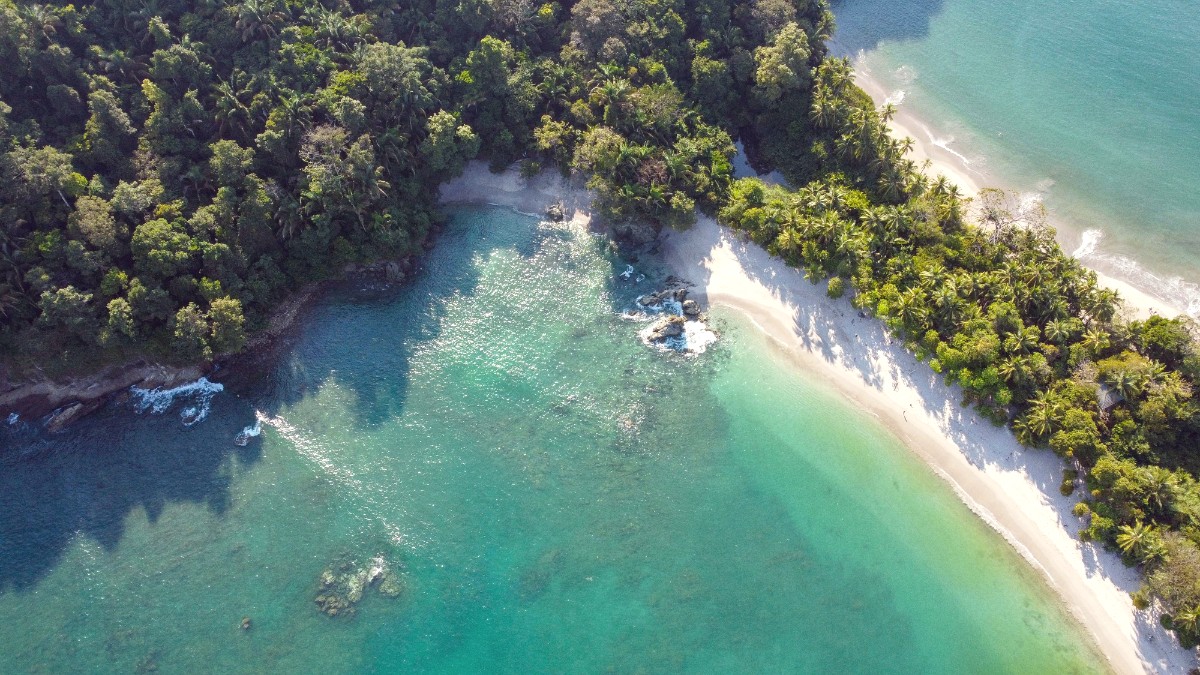
Central Pacific Coast, Costa Rica
Costa Rican cuisine, "comida típica," reflects the country's agricultural heritage. It is hearty, nutritious, and generally not spicy.
The cooking emphasizes fresh, locally sourced ingredients. Meals traditionally center on rice, beans, fresh fruits, vegetables, and lean proteins.
Most dining experiences are casual and welcoming. A 10% service charge and 13% sales tax are usually included in bills.
Typically from 6:00 AM to 9:00 AM, often a hearty meal with Gallo Pinto.
Lunch is the largest meal, 12:00 PM to 2:00 PM. Dinner is lighter, 6:00 PM to 9:00 PM or later.
The national dish of Costa Rica, a flavorful mix of rice and black beans, seasoned with cilantro, onions, red bell peppers, and often Lizano Sauce.
Found at every "soda" and hotel breakfast.
The typical lunch dish, a complete plate of rice, black beans, a protein (chicken, beef, pork, or fish), salad, and fried plantains.
Available at any "soda" and local restaurant.
Refreshing coastal specialty: fresh, raw fish "cooked" by marinating in lime juice, mixed with chopped red onions, cilantro, and sweet peppers.
Find at seafood restaurants and beachside eateries.
Fresh fruit juices (Jugos Naturales), fruit smoothies (Batidos), and famous Costa Rican coffee. For alcoholic drinks, try Imperial or Pilsen beer, Chiliguaro, or Michelada.
Tres Leches (moist cake), Arroz con Leche (rice pudding), and Copos/Granizados (shaved ice desserts). Look for grilled plantains and empanadas at street food stands.
For special occasions, these offer refined culinary experiences, often with stunning views.
Enjoy comfortable dining with diverse cuisines.
For authentic and affordable meals, seek out these options.
Costa Rican cuisine naturally has vegetarian and vegan options with its reliance on rice, beans, and fresh produce. Request "Casado sin carne."
Many restaurants along Manuel Antonio road cater to these preferences.
Rice, beans, fresh produce, and grilled meats/fish are naturally gluten-free. Communicate allergies clearly in Spanish.
Carry translation cards for food allergies.
Hands-on classes on traditional dishes and local ingredients.
Visit local sodas or the Quepos Farmers Market.
Explore local spice farms or sustainable agriculture projects.
Dining inside a converted C-123 Fairchild cargo plane at El Avión.
Halal and Kosher food options are very limited to non-existent in Quepos.
Travelers should plan to rely on fresh fruits, vegetables, and applicable fish/seafood that meet their requirements, or bring specialized certified foods.
Quepos does not have a prominent calendar of dedicated food festivals.
National holidays or local civic festivals may feature special traditional foods like tamales during Christmas. Explore local markets during these times.
While Costa Rica does not have a pervasive street food culture like some other countries, simple offerings can be found.
The Marina features upscale restaurants, cafes, and boutique shops, offering a sophisticated atmosphere.
One of Costa Rica's most famous and biodiverse national parks. It uniquely combines stunning white-sand beaches with lush rainforests.
Entrance fee for non-resident adults is $18 USD. Tickets must be purchased online in advance through the official SINAC website.
Visit early in the morning (7:00 AM) for fewer crowds and active wildlife. Weekday mornings, outside of high season, offer a more serene experience.
Traditional museums are limited in Quepos. For major national museums, San José is the location.
Small local artisan shops display and sell local art, crafts, and jewelry, functioning as informal exhibition spaces.
An immersive, educational experience about nocturnal rainforest life, guided tours reveal creatures active after dark.
This serves as a living, dynamic "museum" of biodiversity.
There are no major archaeological sites or ancient ruins in the immediate Quepos area.
The local Catholic church in Quepos town center is a simple, modern church. Quepos's history is tied to its banana port past and fishing/tourism.
Quepos's industrial heritage links to the banana industry. Military heritage is minimal as Costa Rica abolished its army.
Quepos and its immediate surroundings focus more on natural attractions than traditional museums or historical sites.